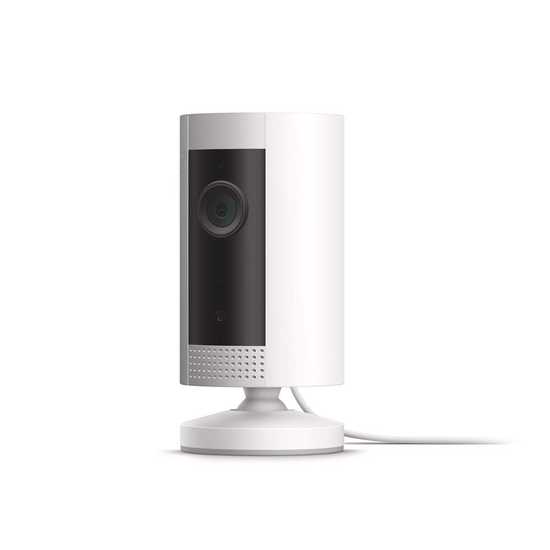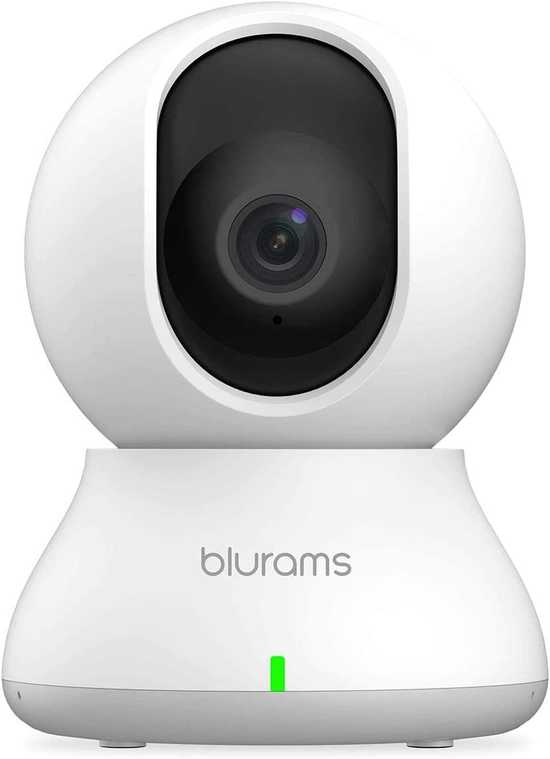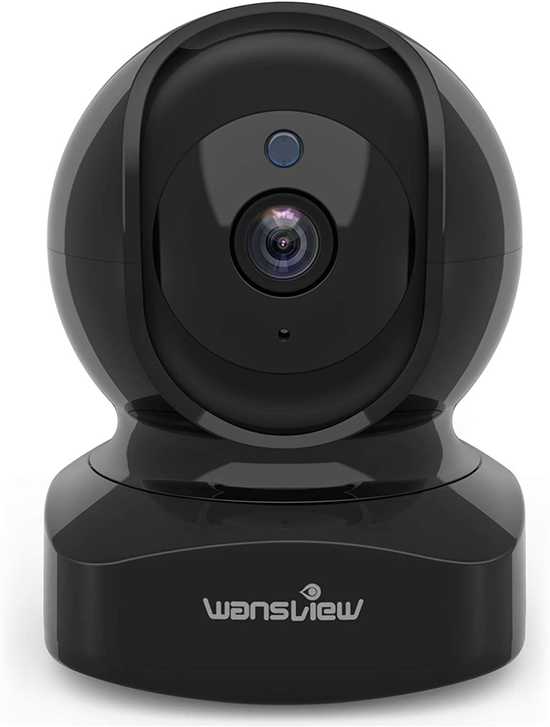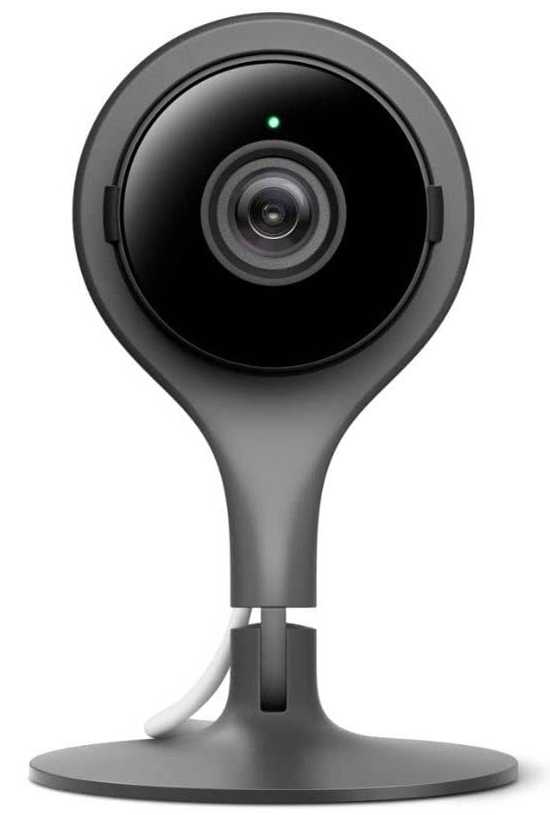Choose The Right Security Camera For Your Home from Amazon
Designed by TheSoftCode LLC on May 04, 2023.
(Estimated time to read is 11 min.)
Categories: Cameras / Smart Devices
Security cameras have become an integral part of modern-day security systems, providing a crucial layer of protection for homes and businesses alike. Security cameras can provide valuable peace of mind, whether you're looking to keep an eye on your property while you're away or simply want to deter potential intruders.
With so many options on the market, choosing the right one for your needs can be daunting. In this review article, we'll be taking a closer look at five popular security cameras and highlighting their key features and benefits.
So, whether you're a tech-savvy homeowner or a business owner looking to beef up your security, keep reading to find the perfect camera for you.
The Blink Mini is a small but powerful security camera that's perfect for keeping an eye on your home or business. Its compact size and easy installation make it a great option for those who want a reliable camera without all the bells and whistles.
Pros - Blink Mini security camera:
-
Affordable price point
-
Easy setup and installation
-
High-quality video and audio
-
Compatible with Alexa for voice control
-
Can be used indoors or outdoors with the appropriate housing
Cons - Blink Mini security camera::
-
Requires a subscription for cloud storage
-
No local storage options
-
Limited viewing angle
-
Some users have reported connectivity issues
-
No option for continuous recording
The Ring Indoor Cam is a versatile and affordable security camera that can be used to monitor your home from anywhere. It boasts high-quality video and audio, along with customizable motion detection zones and the ability to control it with Alexa. Its compact size makes it easy to place it anywhere in your home.
Pros - Ring Indoor security Camera:
-
Affordable price point
-
High-quality video and audio
-
Customizable motion detection zones
-
Works with Alexa for voice control
-
Easy setup and installation
Cons - Ring Indoor security Camera::
-
Requires a subscription for cloud storage
-
No local storage options
-
Limited viewing angle
-
No option for continuous recording
-
Some users have reported connectivity issues
The Blurams Home Pro is an indoor security camera that features a wide-angle lens and customizable motion detection zones to keep your home secure. It also has two-way audio so you can communicate with anyone in the room, and it's compatible with Alexa for hands-free control.
Plus, its AI-powered facial recognition technology can identify and alert you when specific individuals enter your home.
Pros - Blurams Security Camera:
-
AI-powered facial recognition technology
-
Customizable motion detection zones
-
Wide-angle lens for maximum coverage
-
Two-way audio for easy communication
-
Compatible with Alexa for voice control
Cons - Blurams Security Camera:
-
Requires a subscription for cloud storage
-
No local storage options
-
Limited night vision capabilities
-
Some users have reported connectivity issues
-
Not compatible with Google Assistant
The Wansview Wireless Security Camera is an indoor camera that offers HD video and two-way audio to keep your home safe and secure. It also features motion detection technology, night vision capabilities, and the ability to pan and tilt the camera remotely for maximum coverage. Additionally, it's compatible with Alexa and Google Assistant for easy voice control.
Pros - Wansview Wireless Security Camera:
-
HD video and two-way audio
-
Remote pan and tilt capabilities
-
Night vision capabilities
-
Compatible with Alexa and Google Assistant
-
Motion detection technology
Cons - Wansview Wireless Security Camera:
-
Requires a subscription for cloud storage
-
No local storage options
-
Some users have reported connectivity issues
-
Limited viewing angle
-
No option for continuous recording
The Nest Cam Indoor is a popular wired security camera that offers 24/7 live video streaming and recording. It also features customizable motion detection zones and alerts and the ability to communicate with those in the room through its two-way audio system. It's also compatible with Google Assistant for voice control.
Pros - Google Nest Cam Indoor:
-
24/7 live video streaming and recording
-
Customizable motion detection zones and alerts
-
Two-way audio system
-
Compatible with Google Assistant
-
High-quality video and audio
Cons - Google Nest Cam Indoor:
-
More expensive than other options
-
Requires a subscription for cloud storage
-
No local storage options
-
Limited viewing angle
-
No option for continuous recording
FAQs
What are the advantages of a wireless security camera over a wired one?
Wireless security cameras offer several advantages over their wired counterparts. Firstly, they're much easier to install, as they don't require any wiring or drilling. This also means they're more portable, as you can easily move them from one location to another without having to rewire anything. Additionally, wireless cameras can often be placed in more discreet locations, as they don't need to be located near a power outlet or ethernet port.
Another advantage of wireless security cameras is that they often come with a wider range of features, such as motion detection, night vision, and two-way audio. They're also more easily integrated into smart home systems, as they can connect to your Wi-Fi network and be controlled through a smartphone app or voice assistant.
Overall, if you're looking for a security camera that's easy to install, portable, and packed with features, a wireless camera is likely the best choice.
How can I choose a security camera with the right field of view for my needs?
When choosing a security camera, one important factor to consider is the field of view (FOV). The FOV is the area that the camera can capture, measured in degrees. A wider FOV means the camera can capture more of the surrounding area, while a narrower FOV means it can focus on a smaller, more specific area.
To choose the right FOV for your needs, you'll want to consider the area you want to monitor. If you're looking to monitor a large outdoor area, such as a backyard, you'll likely want a camera with a wider FOV, such as 120 degrees or more. On the other hand, if you're monitoring a specific area, such as a doorway or window, a narrower FOV, such as 60 degrees, may be more appropriate.
It's also important to consider the camera's resolution when choosing the FOV. A wider FOV with a low-resolution camera may result in a blurry or pixelated image, while a narrower FOV with a higher-resolution camera will provide more detail.
Is it necessary to have night vision capabilities on my security camera?
Whether or not you need night vision capabilities on your security camera depends on your specific needs. If you only plan to monitor your property during the day, then you likely won't need night vision. However, if you want to monitor your property 24/7 or if you're concerned about security threats at night, then night vision is an important feature to consider.
Night vision allows your camera to capture images and footage in low-light or no-light conditions. Different types of night vision technologies, such as infrared (IR) or low-light imaging, allow the camera to see in the dark. This can be particularly useful for identifying intruders, monitoring outdoor areas, or detecting animal activity.
Ultimately, whether or not you need night vision depends on your specific situation and needs. If you want to be able to monitor your property at all times, then night vision can be a valuable feature to have on your security camera.
What type of motion detection technology should I look for in a security camera?
When it comes to motion detection technology in security cameras, there are a few different types to consider. Passive infrared (PIR) and video-based motion detection are two common options.
PIR technology detects changes in temperature, such as body heat, and triggers the camera to start recording when it senses movement within its range. This type of motion detection is generally reliable and efficient, but it can also result in false alarms triggered by things like small animals or changes in weather.
Video-based motion detection uses algorithms to analyze changes in the camera's field of view, such as movement or changes in lighting, to trigger recordings. This type of technology can be more precise than PIR, but it may require more processing power and can also be more prone to false alarms.
Ultimately, the type of motion detection technology that's best for you depends on your specific needs and environment. Consider factors like the area you want to monitor, the level of security you require, and the likelihood of false alarms to determine which type of motion detection technology is right for you.
How can I tell if a security camera is weather-resistant?
If you're looking for a security camera that can be used outdoors, it's important to make sure it's weather-resistant. One way to determine if a camera is suitable for outdoor use is to look for an IP rating, which stands for Ingress Protection.
IP ratings are two-digit numbers that indicate a device's level of protection against dust and water. The first digit refers to protection against solid particles like dust, while the second digit refers to protection against water. A higher rating generally means greater protection.
For example, a camera with an IP67 rating is dust-tight and can withstand immersion in up to one meter of water for up to 30 minutes. Cameras with an IP68 rating are even more durable, withstanding immersion in water for longer periods.
It's important to note that not all cameras have an IP rating, but most manufacturers will include information about a camera's weather resistance in the product description. If you're unsure about a camera's suitability for outdoor use, it's always best to check with the manufacturer before making a purchase.
Are there any privacy concerns I should be aware of when using a security camera?
There are a few privacy concerns that you should be aware of when using a security camera. One of the main concerns is that the camera may be recording areas that are considered private, such as a neighbor's property or a public space. Additionally, some security cameras may have audio recording capabilities, which may violate the privacy of those being recorded.
To minimize these privacy concerns, it's important to choose a security camera with adjustable settings that allow you to control what is being recorded and when. You may also want to consider informing your neighbors of the camera's presence and being transparent about how the footage is being used. Finally, it's important to follow local laws and regulations regarding the use of security cameras to avoid any legal issues.
What type of storage options are available for security cameras?
When it comes to storing security camera footage, there are several options available. The most common options include cloud storage and local storage. Cloud storage is a popular choice as it allows for remote access to footage and provides a backup in case the camera is damaged or stolen. Some cameras offer free cloud storage, while others require a monthly subscription fee.
Local storage, on the other hand, saves footage directly onto a memory card or hard drive connected to the camera. This option can be more secure and cost-effective in the long run, as there are no subscription fees to pay. However, it may require more manual management of the storage devices. Ultimately, the best option depends on your specific needs and preferences.
How can I make sure the security camera I choose is easy to set up and use?
When choosing a security camera, it's important to consider how easy it will be to set up and use. Look for cameras that come with simple instructions and user-friendly interfaces. Some cameras even offer mobile apps that allow for easy setup and monitoring on your smartphone.
Additionally, consider the type of connectivity options the camera offers. Some cameras may require a wired connection, while others can connect wirelessly to your home network.
Another factor to consider is whether or not the camera comes with a mounting system or other accessories that make installation easier. Some cameras may also offer plug-and-play functionality, allowing you to simply plug them in and start using them without any additional setup required.
What is the difference between a security camera and a surveillance camera?
A security camera and a surveillance camera are often used interchangeably, but there is a subtle difference between the two. A security camera is typically used for monitoring a specific area or property for the purpose of detecting and preventing unauthorized access, theft, vandalism, or other criminal activity. These cameras are usually installed in strategic locations such as entrances, exits, parking lots, and other areas where people may enter or exit.
On the other hand, a surveillance camera is typically used for more general observation and monitoring of an area or property. These cameras may be used to monitor traffic patterns, crowd behavior, or other types of activity that do not necessarily involve security concerns.
In short, while both security cameras and surveillance cameras are used for monitoring purposes, security cameras are focused on detecting and preventing criminal activity, while surveillance cameras are more focused on general observation and monitoring.
What is the downside to WiFi security cameras?
While WiFi security cameras can provide a convenient way to monitor your home or business remotely, there are several potential downsides to consider:
Vulnerability to hacking: WiFi security cameras can be vulnerable to hacking, especially if they are not properly secured. If a hacker gains access to your camera, they could potentially view your live stream, delete footage, or even use the camera to spy on you. Limited range: WiFi cameras rely on a WiFi network to transmit video footage, which means they can only be placed within range of the network. This can limit the placement options for the camera and may require the installation of additional WiFi boosters or extenders. Dependence on Internet connectivity: WiFi cameras require a stable Internet connection to transmit video footage. If your internet goes down, your camera will be unable to transmit footage, rendering it useless. Privacy concerns: WiFi cameras can be seen as invasive and raise privacy concerns, especially if they are placed in areas where people have a reasonable expectation of privacy, such as bedrooms or bathrooms. Cost: While there are many affordable WiFi cameras on the market, high-end models can be quite expensive, and the cost can add up if you need to install multiple cameras to cover a large area. Overall, while WiFi security cameras can be a useful tool for monitoring your home or business, it is important to carefully consider the potential downsides and take steps to mitigate any risks.
Final Verdict
If you're looking for a reliable security camera to monitor your home or business, there are plenty of options to choose from. In this review article, we have highlighted the pros and cons of five popular security cameras, including the Blink Mini, Ring Indoor Cam (1st Gen), Blurams Security Camera, Wansview Wireless Security Camera, and Google Nest Cam Indoor. Each camera has its own unique features, advantages, and disadvantages, so it's important to choose the right one based on your specific needs and budget.
If you're looking for an affordable camera with high-quality video and audio, both the Blink Mini and Ring Indoor Cam (1st Gen) are great options. The Blurams Security Camera is an indoor camera with AI-powered facial recognition technology that can alert you when specific individuals enter your home.
The Wansview Wireless Security Camera is a portable indoor camera with remote pan and tilt capabilities, motion detection technology, and night vision. Finally, Google Nest Cam Indoor offers 24/7 live video streaming and recording, customizable motion detection zones and alerts, and two-way audio.
Wireless security cameras offer several advantages over wired ones, including ease of installation, portability, discreet placement, and smart home integration. Overall, the best camera for you will depend on your specific needs and budget, but there are plenty of great options to choose from in this review article.




